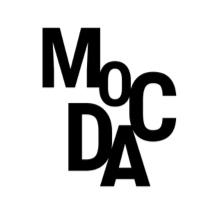"The unbearable lightness of being" by Xeronimo
- Tom Van Avermaet

- Oct 16, 2022
- 2 min read
With the rapid evolution of AI driven art, are we witnessing the blossoming of a whole new art movement? When stumbling on the work of artist Xeronimo (also known as ‘Weaving with AI’) I was particularly struck by how intriguing and at times jaw dropping the results of his experiments with the text-to-image AI model Stable Diffusion truly are. I’ve highlighted the work of many AI artists in past editions and am often amazed by the sophistication and emotional resonance that these works contain. This piece, The unbearable lightness of being, named after Milan Kundera’s literary milestone, left me spell-bound by its complex layers of mixed human feeling. The randomness of the process is somehow lost and I sensed a unity of story and sensation that artists have been trying to capture for eons. This type of work I would dub a new form of collage art, as the drawings used in this animation are of course at its base derived from various human artists and their existing work. Xeronimo himself words it perfectly when he states that “artists and styles are the new brushes and palettes”.
Detecting a Norman Rockwell here and there to me doesn’t make the whole less valuable, for as with any form of collage art, it has its critics, and a discussion of credit and permission is one that will forever be bound to the art style. I personally have always loved this re-imagining of past creations when done in a respectful manner and like it or not, one can’t deny that this cut-and-pasting of drawn moments doesn’t lessen the original pieces but to the contrary binds them into something that deeply moves the viewer.
The work reminded me of the famous Anne Sexton line, ‘I am a collection of dismantled almosts’. We see in black & white a series of ink-colored memories, a life or lives twisted and turning, melting together from birth to death. Seconds of tragedy, of comfort, of loss and yearning fade and are resurrected before our eyes. Ironically, with this work it feels like with the help of AI, we’re somehow given a greater understanding on what it’s really like to live a human life. And isn’t that really at its core what most art is trying to achieve?




Comments